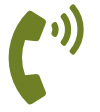A referral program is essential for a successful marketing strategy. Along with it, a timely optimization is vital to bring more accuracy and hit the bull’s eye. A useful optimization can help in improving engagement and increase conversions from referred clients. It also brings astounding clients who spend increasingly and stick around for more.
Merely starting a referral program will not suffice any purpose. Doing homework is mandatory before getting too far into developing a referral program. You have to check the readiness of your business from all possible corners. Thus, it would be a good idea to test and continuously optimize the referral program to yield better results.
Let’s discuss 42 things to test for optimizing the referral program!
1 – Product Quality:
Is your product up to the mark? Is it worth using? Offering a quality product is quintessential for getting referrals. First and foremost, you have to check and test your product’s quality, for which you are asking your customers to refer to new leads. This is one of your business fundamentals to make sure that your work is worth referring to.
2 – Service Quality:
The customers often look for efficient and quality service. Before starting a referral program, you must check whether everything is intact with your service offerings. Always try to improve and optimize when and where it requires.
3 – Business Condition:
Is your business suitable enough to start a referral program? To create and optimize a referral program, your business needs to be in good shape. Only when you have checked and satisfied with your business’s readiness can you go for a referral program and optimize it for better results.
4 – Trained Workforce:
It is essential to verify your workforce whether they are well aware of the referral program since they are the people who interact directly with the consumers. Based on their opinion about the consumers’ response, the referral program can be optimized.
5 – Strong Calls-To-Action (CTA):
When a customer buys a product from your store, he/she receives a mail notification powered by your brand, with a coupon link for him/her to share with friends. To optimize such marketing activities, you have to check whether the CTA link is smartly embedded in the outgoing mails.
6 – CTA Buttons in Social Messaging:
No one can ignore social media’s power in the modern era. You must have a particular set of followers on social media who are interested in your brand.
As you know, CTA buttons always trigger specific actions; it is necessary to test which form of CTA button is capable of making a mark in the consumers’ minds to make a buying decision.
7 – Referral CTA Location on Home Page:
One of the most common A/B tests is to put CTAs in different places. It’s an excellent test for your referral CTA. For instance, link to your referral program with a button on your upper navigation bar and set up another version with the referral CTA at the home page’s bottom. See which one gets more clicks. Based on the test’s result, optimize the program.
8 – Color of CTA Buttons:
Test with different colors on your referral CTA. You might think that small detail like the color of a button wouldn’t have much of an effect on conversion rates. But the evidence suggests that this simple change can have significant impacts.
9 – Incentives Plan:
Plan and structure the incentives in such a way that it motivates your customers. Check whether your incentive plans are well accepted, or the consumers are looking for something different. Communicate effectively with them to get their opinion and optimize it accordingly.
10 – Discounts Offers:
Many brands often offer discounts to their loyal customers. Are these discounts reasonable enough? You have to check what your competitors are offering and how you can go the extra mile to provide something better so that it draws customers’ attention.
11 – Reach Frequency:
You must be aware of how often you tend to reach out to your customers and invite them to your referral program. Past or existing customers are an excellent source for referrals since they’ve purchased from you earlier. Still, it is required to test the communication frequency and decide at what interval you want to contact them.
12 – Referral Display:
There is a common saying – out of sight, out of mind! A customer can’t make a referral if he’s unaware of it. It’s worth reminding your customers (through social media, or on your site itself) that they do have that option, and benefit them.
13 – Referral Codes:
Referral codes are combinations of letters and digits jumbled together to form a unique value. Improve such referral codes so that your customers can use it easily without much of remembering. Maybe a Smart App can simplify the process.
14 – Personalization:
Let’s start by asking a question with two scenarios – If someone calls you saying – Hey you! OR someone addresses you by your name – Hey Adam! The latter carries much weight and emotion.
For referral programs, invoking the name of a friend in the subject line can be helpful. Personalizing your referral program matters a lot, and thus you have to keep a check on the customized content going out to your customers.
15 – Actionable Language:
Being instructive and active with the subject line is important because it drives readers to engage with the message. Keep close watch regarding the usage of verbs.
Use 1st person and 2nd person point of view. Active verbs (like “download,” “watch,” “ learn,” “buy,” etc.) tell the reader what to expect from a mail copy as well as promoting the action itself.
16 – Ask Question:
While you are sending emails or online messages, do you ask questions? It increases curiosity, involves the reader on a personal level by directly asking them, and it caters to their self-interest. Moreover, asking questions which help you to get valuable inputs and suggestion from your loyal customers.
17 – Short Messages:
You must check whether you send long and tedious messages to your customers. They do not have time to read your messages, and even if they do so, they will look for something short and crisp.
18 – Conversational and Branded Tone:
You have to optimize the tone you use while marketing your referral program. Messaging is all about delivering information. But that doesn’t mean you need to sound robotic or uninteresting. Informal language like “Howdy” or “Hey there” increasing the likelihood of responses.
19 – Deliver Benefits:
Your customers are interested in getting benefits. You have to test whether you are delivering excellent services to them. If not, then optimize your referral program and include the necessary benefits to motivate them.
And even you are on the right track, there is always a scope for innovation. The primary focus should be on creating compelling offers.
20 – Relevant Message:
Check whether your messages are relevant to the purpose. Don’t talk or discuss irrelevant stuff. It’s irritating, and every time you reach out to your customers with such messages, there is a high chance that they might opt out from reading it. Thus, always talk to the point with enough relevance.
21 – Referral Program Sign Up:
Check and test whether you are doing enough to invite your customers and sign up for the referral program. Keeping a stable connection with your customer base is helpful in the long run. Dwell in their mind and keep reminding them to sign up.
22 – Referral Emails:
Optimize your referral emails and make them bold and straightforward. Keeping things innovative and straight is the key to success. You can prepare a set of emails and see which style works well in yielding more responses. Accordingly, act and follow the desired format.
23 – Referral Marketing Channels:
You often market referral programs through various channels. Not necessarily every channel would work for your brand.
You need to test each channel and conclude the right one for your brand, yielding maximum and profitable responses. Based on the AB testing, you will further optimize and concentrate on marketing the referral program on those channels.
24 – Referral Program Promotion:
Without a planned promotional loyalty strategy for your referral program, it isn’t easy to reach out to the target audience. You must check whether all the channels are correctly utilized for promoting. You will also have to optimize and modify alongside all the promotional activities.
Make sure to have banners displayed prominently throughout the site and on the home page. You can also promote your referral program at key touchpoints such as right after making a purchase. Other effective touchpoints are order confirmation pages and purchase confirmation emails.
25 – Finding:
By various means of testing, you have to find out what makes people refer to others. Research shows that there are essential factors that influence customers for sharing referrals. They are – ideas, emotions, information, etc. Are you doing enough to meet these requirements? Test and do the needful.
26 – Timing:
Always test the timing when you are getting much response from your customers at the time of promoting your referral program. Timing is vital in this case. Sending the right thing at the right time helps a great deal.
27 – Test Referral Marketing Program Messaging:
Testing the messaging process is essential for any brand with a referral marketing program. Let’s discuss the message testing steps in detail:
> Research your customer and their personas
> Build two different messages
> Display one version for a specific period and then display the other
> Analyze the data which one is behaving better
> If neither of the versions succeeds, then start afresh
> If anyone version works, then apply that to your referral marketing program
28 – Advocates and Partners:
You need thorough research on the business you have partnered with – How are they behaving with your referral programs? How effective are they in terms of sharing referrals? The same applies to the Advocates. Optimize the referral program according to their need to get better results.
29 – Easy Sharing:
Test whether the sharing process of your referral program is easy. Always try to offer your customers an easy and painless way to share. The sharing experience should be effortless and in a clean interface.
30 – Adequate Information:
Are you sharing enough information about your referral program? Are the reward ideas clear enough to the customers and brand advocates? Check on these questions since it is essential for a referral program. You need to describe the offer and detail exactly what the reward is.
31 – Monitoring Result:
Maintaining a referral program is an ongoing process. You want to optimize the plan to increase the success rate continually. To reach the desired goal, you must keep track of all the activities regarding your referral program.
32 – Approach:
Have you given a thought to how you approach your customers and brand advocates for referrals? Does it sound aggressive, or does it seem irritating? You must test which approaches are most suitable for your target audience. Try to be natural as much as you can and not pushy at all.
33 – Reward Size and Type:
You must offer worthy rewards. Always test various reward ideas and find out the most suitable option. Always provide something which is widely accepted by your customers. Reward size and type matter the most in the referral program when you are thinking of optimizing it.
It is not always true that a more significant incentive would still drive more people to become advocates. Customers prefer referral because it feels like a favor for a friend, and not a ploy to get free stuff, which is why smaller rewards often outperform bigger ones.
34 – Ways to Refer a Friend:
Between email, social media, and SMS, you can offer the advocates many ways to share a referral. Test different combinations to see which one gets the most out of your advocates.
If you provide users too many sharing options, you won’t be able to optimize them. Once you’ve figured out the solution, pour all your efforts into making them convert as much as possible.
35 – Guiding New Customers:
There must be some products and services on which you want referrals. You can test adding various steps to the referral process that will supposedly help customers find specific products they’ll like. Once you gauge the actions, they are most likely to avail, use that to optimize the referral process.
36 – Both Sides Benefits:
Creating both side reward is necessary for an effective referral program strategy. You need to take care of the reward program attributed to your customers who are referring and to the person who has been referred. Generally, we see a one-sided reward program.
However, if you could optimize the referral program with both-way rewards, it will motivate the new lead to buy.
37 – Visibility:
If customers can’t see it, they can’t share it. You have to test the visibility ratio of your referral program. The more it is visible to your customers, the more you will be benefited from it. Thus, it is essential to optimize your referral program to increase visibility.
38 – Knowing the Audience:
Are you reaching out to the right audiences with your referral program? To get the answer, you have to test which audience reacts actively. Accordingly, you can optimize, promote, and focus on this audience more than other target groups.
39 – Test and Optimize Everything:
When it comes to the online referral programs, optimization is a bit complicated compared to the typical promotional email campaigns. Always try to do A/B testing on as much topic as possible to help deliver a consistent experience for referral program users.
40 – Progress:
To capture consumers’ interest, keep the first referral program promotional email and the registration page short and sweet with a clear value proposition. After a customer registers for the referral program, you can detail the types of referrals that payoff.
41 – Clicks and Responses:
Every time you launch a referral program, you must keep track of the number of Clicks and the number of responses you are receiving from the online and offline sources. This determines the success rate and also helps in gauging whether you are heading in the right direction.
42 – Competitor Analysis:
You will always have to be well aware of your competitors. Should you find any of their strategy, which is generating enormous referrals, you can test something alike in your program with a touch of your brand’s uniqueness. Or else you can always draw inspiration and formulate and optimize your referral program.
To meet the formula of a successful referral program strategy, you have to go through a lot of trial and error. Only then can you conclude which works and which doesn’t. A/B testing and constant optimization is the key to yield better results from referral programs.
If the overall methodology is followed diligently, it will create enough buzz and increase referrals. NextBee has developed an awesome methodology that aims to improve referral programs known as PACE Methodology.
To get more insights about it, and other effective solutions to all your business needs, contact NextBee at 1-800-547-1618














